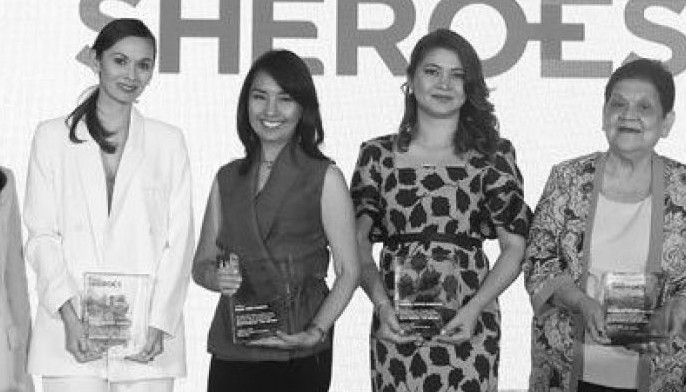IDP community journeys to recovery
DATU PIANG, Maguindanao , Philippines – Using a long, thin stick, 15-year-old Muhanna Mohammad points at letters written on manila paper as around 30 children break into song, reciting the alphabet.
“I like reviewing my alphabets,” says Asad Mohammad, eight, Muhanna’s younger brother, an incoming Grade 2 pupil at the nearby Datu Gumbay Elementary School.
“We were taught how to be obedient to our parents,” quips his playmate, Maguid.
But five-year-old Maira Abdumagid’s favorite part is doing action songs.
The children take a break and wait for their snacks to be served. For the past four weeks, this bamboo and concrete structure called a “safe space for children” has served as their classroom-cum-play area. It is part of psychosocial sessions of the integrated rehabilitation program designed for internally-displaced persons (IDPs) affected by the 2008 armed conflict in Mindanao who are now starting to rebuild their lives and communities.
The families of Muhanna, Asad, Maguid, and Maira are among the 50 families who resettled to this part of Barangay Buayan from the remote Sitio Nimao, a sub-village of Buayan. Since February this year, they have been living in core shelters provided in the rehabilitation program that is supported by the Strengthening Response to Internal Displacement in Mindanao (StRIDe-Mindanao) project funded by the European Commission.
StRIDe-Mindanao is lodged within the government and UNDP-managed Action for Conflict Transformation (ACT) for Peace Program implemented by the Mindanao Development Authority (formerly Mindanao Economic Development Council) in partnership with the regional government of the Autonomous Region in Muslim Mindanao.
Also included in the rehabilitation package are installation of water system, construction of barangay health station with provision of medical equipment, establishment of botika ng barangay, supplemental feeding, provision of services to address reproductive health concerns of women and children as well as provision of livelihood support.
The project, through its local implementing partners, is also facilitating the formation and strengthening of community organizations such as the Barangay Water and Sanitation Association (BAWASA) and Neighborhood Association and Shelter Assistance (NASA). Trainings on sustainable operation of facilities, culture of peace, conflict resolution and management, disaster preparedness and risk reduction, early warning and preventive measures are also being conducted.
A total of 30 communities in Sarangani, Sultan Kudarat, South Cotabato, Lanao del Norte, Zamboanga del Norte, Zamboanga Sibugay, Sulu, Basilan, Maguindanao and North Cotabato are being assisted for multi-sectoral rehabilitation under StRIDe Mindanao.
Here in Buayan, the men and women are in the process of identifying the form of livelihood they wish to engage in.
“The men wish to secure fishing gear and agricultural inputs while the women want to do mat weaving. But we will still conduct another round of consultation to finalize the livelihood assistance,” said Fairudz Rose Ebus, executive director of Mindanao Tabang Bakwet (MTB), the local implementing partner of StRIDe-Mindanao in Buayan and convenor in Central Mindanao of the Mindanao Emergency Response Network (MERN).
IDP-farmers till their lands in Sitio Nimao, still considered a highly conflict vulnerable area, and come home to the relocation site at sundown. They are also cultivating vegetable gardens in their backyards.
“Our condition is far better here than at the evacuation center,” said Sijasmin Makmod, 39, who lives with her elderly parents and two siblings in one of the shelters, which now has a two-meter extension to accommodate a receiving area and a kitchen.
Assistance from other programs and government agencies also poured into this small community.
Oxfam provided four latrines and one came from Lutheran World Relief. Save the Children gave non-food items to the families while UNICEF trained MTB staff on psychosocial processes and in turn, trained young IDP youths, like Muhanna and three others from Buayan.
It may be a long journey for these IDPs to full recovery but they have made significant steps.
For now, Muhanna, Asad, and Maguid are looking forward to the opening of classes this week.
- Latest



























